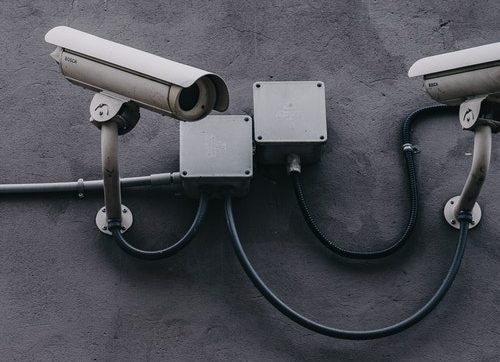What Are the Different Types of Security Cameras That Exist Today?
Did you know that the video surveillance market in this country is expected to surpass 23 billion dollars by 2027? Increased demand for safety has fueled the industry, and there are signs of slowing down. But with so many security cameras, how do you know which one to choose for your home or business?
If you’ve been considering purchasing a security camera, research is essential since not all cameras are created equal. Luckily, now is the perfect time to learn more about them with this handy guide. Check out some of the many different types of security cameras here.
What Are the Different Types of Security Cameras That Exist Today?
Dome Cameras:
Dome cameras are among the most common types of security cameras. As the name suggests, they are housed in a dome-shaped enclosure, providing a discreet, unobtrusive surveillance solution. Dome cameras, such as those in retail stores, offices, and residential settings, are ideal for indoor use. Their sleek design and wide-angle coverage make them suitable for monitoring large areas effectively. Additionally, many dome cameras feature vandal-resistant casings, offering durability and protection against tampering.
Bullet Cameras:
Their cylindrical shape and compact size characterize bullet cameras. They are designed for both indoor and outdoor surveillance and offer weatherproof and rugged construction to withstand harsh environmental conditions. Bullet cameras are highly versatile and can be mounted on walls, ceilings, or poles, making them suitable for various applications, including parking lots, entrances, and perimeter monitoring. With their long and narrow field of view, bullet cameras are particularly effective for clearly capturing distant objects.
PTZ Cameras (Pan-Tilt-Zoom):
PTZ cameras have motorized mechanisms that enable remote control over pan, tilt, and zoom functions. This versatility allows users to adjust the camera’s viewing angle and focal length, providing comprehensive coverage of the surveillance area. PTZ cameras are commonly used in large-scale installations, such as casinos, airports, and stadiums, where real-time monitoring and tracking of subjects are crucial. Many PTZ cameras also feature advanced analytics capabilities, including motion detection and object tracking, enhancing their effectiveness in surveillance operations.
IP Cameras (Internet Protocol):
IP cameras utilize digital technology to transmit video footage over an IP network, such as the Internet or a local area network (LAN). Unlike traditional analogue cameras requiring a separate video recorder, IP cameras can store footage locally or on a remote server, offering greater flexibility and scalability. IP cameras are available in various configurations, including dome, bullet, and PTZ models, and can support advanced features such as high-definition video, two-way audio, and night vision. Additionally, many IP cameras are compatible with smartphone apps and cloud-based services, allowing users to access live feeds and recordings remotely.
Wireless Cameras:
Wireless cameras eliminate the need for cumbersome cables by transmitting video signals wirelessly to a receiver or network device. These cameras are easy to install and can be placed virtually anywhere within the range of a Wi-Fi network, making them ideal for temporary or remote surveillance applications. Wireless cameras come in various shapes and sizes, including dome, bullet, and hidden camera types, offering flexibility in deployment. However, it’s important to note that wireless cameras may be susceptible to interference from other electronic devices and have limited range compared to wired counterparts.
Thermal Cameras:
Thermal cameras utilize infrared radiation to detect heat signatures emitted by objects and living beings. Unlike traditional cameras that rely on visible light, thermal cameras can capture images in complete darkness and adverse weather conditions, making them ideal for outdoor surveillance at night. Thermal cameras are commonly used in perimeter security, border patrol, and search-and-rescue operations, where detecting intruders or identifying thermal anomalies is critical. These cameras are available in various form factors, including fixed-mount, PTZ, and handheld models, offering versatility in deployment.
360-Degree Cameras:
360-degree cameras, also known as panoramic or fisheye cameras, offer a comprehensive view of the surrounding environment by simultaneously capturing footage in all directions. These cameras use specialized lenses to create immersive panoramic images, eliminating blind spots and providing complete coverage of the surveillance area. 360-degree cameras are handy in large open spaces, such as shopping malls, warehouses, and parking lots, where traditional cameras may struggle to capture the entire scene. 360-degree cameras also support virtual PTZ functionality, allowing users to digitally pan, tilt, and zoom within the panoramic image for detailed examination.
Learn More About Security Cameras
Now that you’ve discovered different types of security cameras, you can dive deeper into the world of CCTV and more. Before you decide, it’s essential to consider the features you need, like low-light or night vision. Then, pick one best suited to indoor or outdoor use, depending on its location.
Did you find this article helpful? Want to explore similar topics? Then check out the rest of this site!

















